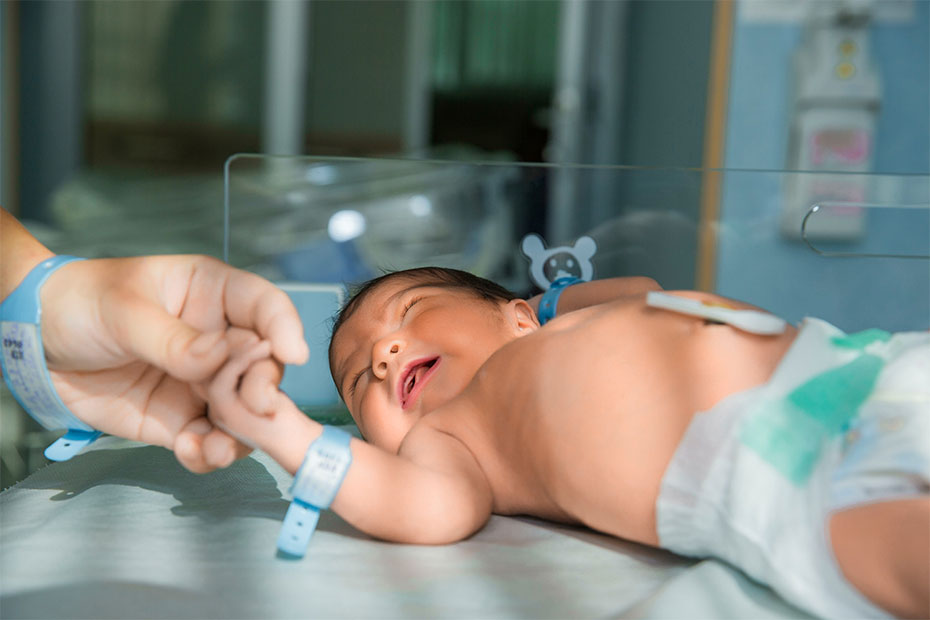What is Neonatal Jaundice?
Jaundice, a common condition in new-borns, refers to the yellow colour discolouration of the skin and the eyes that happens when there is too much bilirubin in the blood. Jaundice usually appears around the second or third day of life. A jaundiced baby’s skin usually will appear yellow first on the face, then the chest and stomach, and finally, the legs. It can also make the baby’s eyes look yellow.
Parents also should watch their baby for jaundice. Jaundice can be hard to see, especially in babies with dark skin. If you’re unsure, gently press the skin on your baby’s nose or forehead — if jaundice is present, the skin will appear yellow when you lift your finger.
Why does it occur?
Jaundice is usually present in 80% of new-borns. The yellowness is caused by a molecule called Bilirubin present in the bloodstream naturally.
Bilirubin (bill-uh-ROO-bin) is produced by the normal breakdown of red blood cells. Normally, it passes through the liver, which releases it into the intestines as bile (a liquid that helps with digestion).
What can I do to prevent it in my baby?
Nurse your baby every 2 to 3 hours during the day or feed when the child demands. Don’t bottle feed. Increase how often you feed your baby.
When and why should jaundice be treated?
Most cases of new-born jaundice don’t require treatment. Jaundice that only involves the face and eyes is always harmless. As it involves the chest, the level is going up. If it involves the stomach, arms or legs, the bilirubin level needs to be checked. Mild or moderate jaundice will go away after 1 or 2 weeks as the baby’s body becomes able to get rid of the excess bilirubin on its own.
Most new-borns go home from the hospital 1 or 2 days after birth, so it’s important for their doctors to check them for jaundice 1 to 2 days later.
Severe jaundice (when levels of bilirubin are high, usually above 25 mg) that is not treated can cause deafness, cerebral palsy, or other forms of brain damage. In rare cases, jaundice may be a sign of another condition, such as an infection or a thyroid problem.
How is jaundice treated?
For high levels of jaundice, phototherapy — treatment with a special light that helps rid the body of the bilirubin — may be used. Treatment usually involves child staying in Neonatal Unit (nursery) for 2-4 days depending on the severity of jaundice.
Very rarely babies need to have other treatment like exchange transfusion of blood to combat jaundice.
